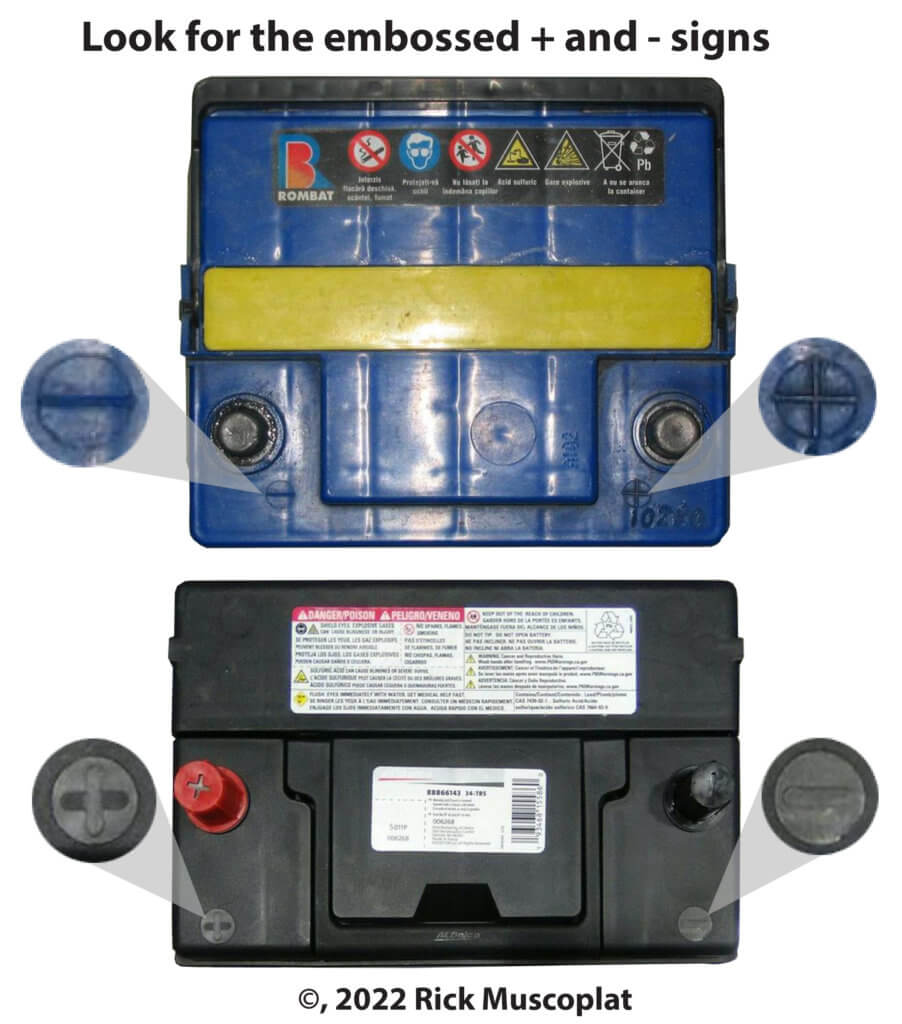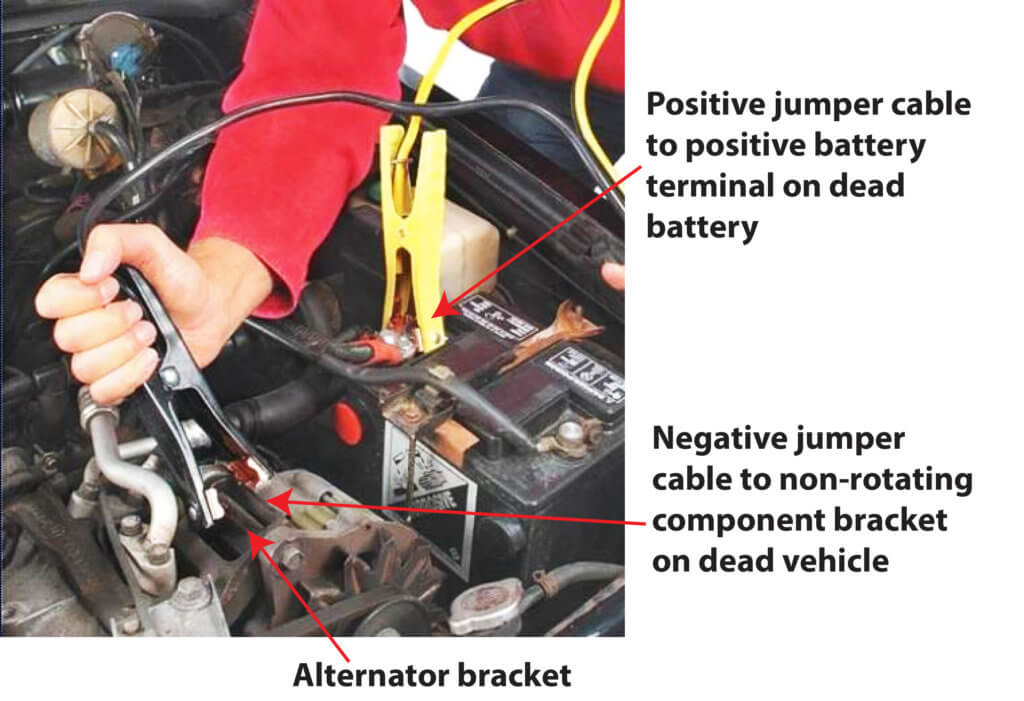Tips to jump start a car
Tips to jump start a car
If you jump start a car the wrong way, you can do plenty of damage
There’s always some risk when jump-starting a car. When connecting the last jump cable, there’s always a spark and that spark can ignite hydrogen gas given off by the battery. That’s why you always make the final connection to an engine or body component that’s far away from the battery. That way, any spark created during the final connection won’t be near the hydrogen gas. But there are several other safety tips.
Double check battery terminal polarity before connecting jumper cables
Putting the jumper cables on the wrong battery post or ground point can blow main fuses and even damage expensive vehicle computers. Connecting the wrong battery post is the #1 cause of jump start failures.
Take your time locating the + and – markings on the battery case. If you can’t find the markings, wipe off the battery with a rag. Don’t guess!

Turn off all electrical accessories in the dead vehicle before connecting the jumper cables
The surge spark that’s generated when you make the final connection is an arc caused by the flow of power from the donor car to the dead battery. But if you leave any accessory on in the dead vehicle; like headlights, you create even more power demand when connecting cables. Worse yet, the arc produces very high voltages that can damage sensitive computers. So turn them off.
Turn off headlights, blower motor, wipers, rear defroster, seat heaters and even your radio in the dead vehicle! Turn the IGNITION in both vehicles to OFF. Seriously, why risk damaging a $500 factory radio during a jump start.
How to connect jumper cables
1) Connect a red jumper cable to the positive battery terminal or jump-starting stud on the dead vehicle.
2) Connect the opposite end of the red cable to the positive terminal or jump-starting stud on the running (donor) vehicle.
3) Connect a black jumper cable to the negative post on the donor vehicle
4) Connect the opposite end of the black jumper cable to a clean engine bracket on the dead vehicle.
Painted bolt heads don’t make very good contact, so clamp to an engine component bracket instead. Wiggle the clamp to ensure good contact.

Leave the cables connected for at least 5 minutes before trying to start the dead vehicle
Start the donor vehicle and raise the idle to 1,500 RPM. Maintain that idle for at least 5-minutes. That will run the donor alternator at a high enough speed to charge the dead battery while preventing the donor alternator from overheating.
Then try starting the dead vehicle
Cranking tip during the jump start
The owner of the dead vehicle most likely tried multiple times to start the vehicle and may have pumped the gas pedal. In other words, they may have flooded the engine. If the engine on the dead vehicle cranks strongly but won’t fire up and you suspect a flooded engine, depress the gas pedal all the way to the floor and hold it there while cranking. That puts the computer into “clear flood” mode and the ECM shuts off the fuel injectors. The full throttle with no added fuel can help evaporate the excess fuel in the cylinders. After cranking for a few seconds with full throttle, release it and see if you get any signs of life from the engine.
Once the dead vehicle starts, disconnect the negative jumper cable first.
After starting, the engine may run rough
When the battery voltage drops to below 9.6-volts, the ECM loses its adaptive memory; those changes to the factory programming that compensate for engine wear. Don’t panic. Your ECM will relearn that data over a period of time, usually, the next 10 cold starts.
Engine won’t idle or accelerate after jump start
As mentioned above, the computer loses its memory when the battery voltage dips below 9.6-volts. On a late model vehicle, that may mean the electronic throttle body no longer recognizes its “home” position. In that case, you may have to perform a throttle body relearn procedure. Unfortunately, the procedure is different for every year, make, model and engine. I’ve posted some of the relearn procedures on this site. Just search for the term “relearn” to see if yours is included.
©, 2019 Rick Muscoplat
Posted on by Rick Muscoplat